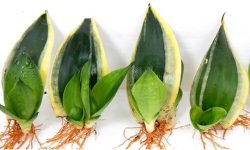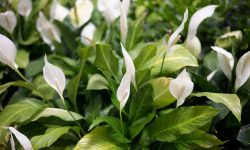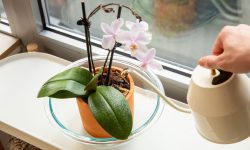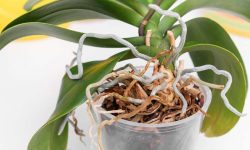Magnolia trees are symbols of timeless beauty, with their large, fragrant blossoms and graceful presence in any garden. Growing one from seed may seem like a slow journey, but it offers a deeply personal connection to nature—watching life unfold from a tiny seed to a magnificent flowering tree.
If you’ve ever dreamed of planting your own magnolia, this step-by-step guide will walk you through the entire process. From collecting and preparing seeds to creating the perfect environment for germination, you’ll learn everything you need to grow a healthy magnolia tree right from the start—no prior experience required.
Understanding Magnolia Seeds
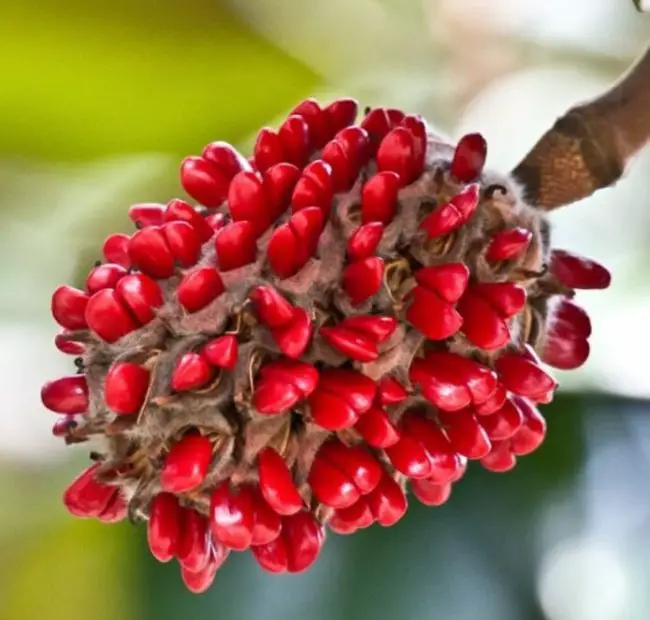
What Magnolia Seeds Look Like
Magnolia seeds are small, firm, and dark-colored—usually dark brown or black—once cleaned. Each seed is enclosed in a bright red, fleshy outer covering called an aril, which acts as a natural attractant for birds and animals. These seeds are nestled inside cone-like fruit structures that resemble small, woody pine cones, and they typically ripen and split open in early fall, revealing the seeds dangling on fine threads.
The size and shape of the seeds can vary depending on the magnolia species. For example, Magnolia grandiflora produces relatively large, teardrop-shaped seeds, while Magnolia stellata seeds are smaller and more rounded. Identifying the species you’re working with can help you anticipate seed characteristics and care requirements.
When and How to Collect Magnolia Seeds
The ideal time to collect magnolia seeds is in late summer through early fall, usually between September and November, depending on your climate and magnolia species. Wait until the seed pods (technically called follicles) naturally split open, which indicates that the seeds inside have reached full maturity. Collecting seeds too early can result in low viability and poor germination.
Use gloves when handling the pods, as the red arils can stain your skin. Gently twist or pull the seeds from the open pods, taking care not to damage them. After collection, the seeds should be processed and cleaned promptly to prevent drying out or molding.
Are Magnolia Seeds Easy to Grow?
Magnolia seeds are not the easiest to grow, but with proper preparation and patience, they can be successfully germinated even by beginners. Their dormancy and long germination time require gardeners to plan ahead and follow each step carefully—from cleaning and stratifying the seeds to providing optimal moisture and warmth.
However, the payoff is significant. Growing a magnolia tree from seed gives you the opportunity to witness every stage of its development and can result in a unique specimen with characteristics that may differ subtly—or even dramatically—from its parent tree.
Preparing Magnolia Seeds for Planting
Cleaning the Seeds
Once collected, magnolia seeds must be cleaned before planting to remove their red, fleshy arils. This outer coating can attract mold and bacteria if left intact, which could hinder germination. The easiest way to clean them is by soaking the seeds in warm water overnight to soften the arils. After soaking, rub them gently between your fingers or use a soft cloth to peel off the red coating.
Alternatively, placing the seeds in a bowl with a small amount of coarse sand or vermiculite and swirling them around can help clean off the outer layer through gentle abrasion. Once clean, rinse the seeds thoroughly and let them dry on a paper towel for a few hours before moving to the next step.
Testing Seed Viability
Before proceeding with stratification, you can test seed viability by placing the cleaned seeds in a bowl of water. Healthy, viable seeds usually sink, while non-viable seeds often float. Though this method isn’t always 100% accurate, it helps you eliminate seeds that are more likely to fail during germination.
Stratifying the Seeds
Magnolia seeds naturally go dormant after falling in autumn, and they require a period of cold, moist conditions—known as cold stratification—to mimic winter and trigger germination in spring. Without this step, most magnolia seeds will not sprout.
To stratify your seeds:
Prepare a plastic zip-lock bag filled with a damp medium like peat moss, perlite, or moist sand. The medium should be moist but not soggy.
Mix the cleaned seeds into the medium, seal the bag, and label it with the date.
Store the bag in the refrigerator at around 4°C (40°F) for 60 to 90 days.
Check the bag periodically to ensure the medium stays moist and to look for early signs of sprouting. If any seeds begin to germinate in the fridge, plant them immediately in small containers with seed-starting mix.
Storing Seeds for Later Use
If you’re not ready to plant right away, magnolia seeds can be stored temporarily after cleaning. However, they do not store well for long periods. To preserve viability, store cleaned seeds in a breathable paper envelope inside the refrigerator and aim to stratify and plant them within a few weeks.
Avoid letting magnolia seeds dry out completely during storage, as they are considered recalcitrant seeds—meaning they lose viability quickly if dehydrated. Keeping them cool and slightly moist is key to successful germination later on.
Choosing the Right Planting Medium
Best Soil for Magnolia Seed Germination
Magnolia seeds need a lightweight, well-draining medium that retains moisture without becoming soggy. The ideal mix is a sterile seed-starting blend made from ingredients like peat moss, perlite, and vermiculite, which support healthy root development and reduce the risk of fungal infections. Avoid heavy garden soil or compost, as they can compact easily and suffocate young roots.
If you prefer to make your own mix, combine 2 parts peat moss or coco coir with 1 part perlite or coarse sand for added drainage. This creates a loose, airy texture that encourages strong germination and reduces the risk of damping off.
Preparing Pots or Trays
Use small pots, seed trays, or cell packs with proper drainage holes. Before planting, moisten the growing medium thoroughly so it feels damp but not soaked. Fill each container loosely, avoiding compacting the soil, and level the surface to ensure even planting depth for the seeds.
By starting with the right medium, you’ll give your magnolia seeds the best possible environment to sprout and grow into healthy, resilient seedlings.
Creating the Ideal Germination Environment
Temperature and Humidity Control
Magnolia seeds germinate best in a consistently warm environment, ideally between 70°F and 75°F (21°C to 24°C). To maintain this range, place seed trays on a heat mat or in a warm indoor spot away from cold drafts or fluctuating temperatures.
Humidity is equally important. Seeds require a moist but not soggy environment to sprout. Cover your trays with clear plastic wrap, a humidity dome, or place them in a mini greenhouse to retain moisture. Be sure to vent the cover daily for a few minutes to release excess humidity and prevent fungal growth.
Light Conditions Before and After Germination
Before germination, magnolia seeds do not require light, so place them in a shaded area or under indirect light. Once seedlings emerge above the soil, move them to a bright location with indirect sunlight or under LED grow lights for 12–14 hours a day. This encourages healthy, compact growth and prevents leggy, weak stems.
Air Circulation and Mold Prevention
Enclosed environments can trap moisture and encourage mold. To combat this, ensure gentle air circulation around your trays. A small fan on a low setting nearby can help improve airflow without drying out the soil. Good ventilation lowers the risk of damping-off disease and supports healthy seedling development.
Monitoring and Adjusting Conditions
Check your soil daily to maintain the right moisture level—it should feel like a wrung-out sponge. If it starts to dry, mist lightly with a spray bottle. At the first sign of mold, sprinkle a light layer of cinnamon or activated charcoal powder on the surface as a natural antifungal.
Creating an ideal germination environment ensures higher success rates, encourages uniform sprouting, and gives your magnolia seedlings the best possible start.
Transplanting Magnolia Seedlings
When to Transplant
Magnolia seedlings should be transplanted when they develop two to three sets of true leaves and reach a height of 3 to 4 inches (7–10 cm). At this stage, their root systems are strong enough to handle movement without causing stress or damage. Avoid transplanting too early, as young roots are very delicate.
How to Transplant Safely
To begin, prepare individual pots with well-draining potting mix, ideally similar to the germination medium but enriched with a small amount of compost for nutrients. Water the seedlings a few hours beforehand to soften the soil and make removal easier.
Use a small spoon or stick to gently lift each seedling by the root ball or base of the stem, avoiding contact with the fragile leaves. Place it in the new pot at the same depth it was growing before, and press the soil gently around the roots to eliminate air pockets.
Water lightly after transplanting and place the pots in a shaded area with bright, indirect light for a few days to help the seedlings adjust.
Preparing for Outdoor Planting
If you plan to grow your magnolia tree outdoors, begin hardening off the seedlings about 2 weeks before transplanting them into the garden. Gradually expose them to outdoor conditions by placing them outside for a few hours each day, increasing time and sunlight exposure daily. This step helps reduce transplant shock and improves survival once planted in their permanent location.
Long-Term Care for Magnolia Trees Grown from Seed
Watering and Soil Maintenance
Young magnolia trees need consistent moisture during their first few years. Water deeply once or twice a week, depending on rainfall, ensuring the root zone stays evenly moist but not waterlogged. As the tree matures, it becomes more drought-tolerant, though occasional deep watering during dry spells supports stronger root development.
Keep the soil around the tree mulched with organic materials like shredded bark or leaf compost to retain moisture, regulate temperature, and suppress weeds. Refresh the mulch annually, keeping it a few inches away from the trunk to prevent rot.
Pruning and Shaping
Minimal pruning is required, especially during the early years. Focus on removing weak, damaged, or crossing branches to encourage a strong, balanced structure. The best time to prune is late winter or early spring, just before new growth begins. Avoid heavy pruning, as magnolias have a naturally graceful form and may respond poorly to drastic cuts.
Fertilizing for Healthy Growth
Fertilize in early spring with a balanced, slow-release fertilizer or one formulated for acid-loving trees and shrubs. Avoid over-fertilizing, which can lead to excessive leaf growth at the expense of flowering. Once established, mature magnolias often thrive with little or no feeding unless soil tests indicate a deficiency.
Pests, Diseases, and General Monitoring
Magnolias are generally hardy, but they can be affected by scale insects, aphids, or leaf spot diseases. Inspect your tree regularly for signs of stress, discolored leaves, or pest activity. Use organic insecticidal soap or neem oil as needed, and ensure good airflow around the tree to prevent fungal problems.
Patience and Bloom Expectations
Magnolia trees grown from seed typically take 5 to 10 years to flower, depending on species and care. During this time, prioritize healthy foliage, strong roots, and structural growth. With proper long-term care, your magnolia will eventually reward your patience with fragrant, elegant blooms for decades to come.
are. During this time, prioritize healthy foliage, strong roots, and structural growth. With proper long-term care, your magnolia will eventually reward your patience with fragrant, elegant blooms for decades to come.
Common Challenges and How to Overcome Them
Low Germination Rates
Magnolia seeds often have uneven or low germination rates due to dormancy or improper stratification. To improve success, always stratify seeds for 60–90 days in a moist, cold environment and use only plump, firm seeds. Keeping the soil consistently moist and warm after sowing also helps trigger sprouting.
Mold and Fungal Growth
Excess humidity or poor airflow can lead to mold, damping-off, or root rot in seedlings. To prevent this, avoid overwatering, use sterile seed-starting mix, and provide ventilation daily when using humidity covers. A light dusting of cinnamon or fungicidal powder on the soil surface can also deter fungal growth naturally.
Weak or Leggy Seedlings
Seedlings grown in low light often become tall, thin, and weak. Ensure they receive bright, indirect light or 12–14 hours under grow lights once they sprout. Keep temperatures stable and avoid excess nitrogen, which can promote weak growth.
Transplant Shock
Moving seedlings too early or roughly can lead to wilting and stunted growth. Always transplant when seedlings have strong roots and at least two sets of true leaves. Handle gently, water thoroughly after transplanting, and shield from harsh light for a few days to help them adjust.
Pest Problems
Young magnolia seedlings can be targeted by aphids, slugs, or spider mites. Check regularly for signs of damage and remove pests by hand or treat with organic insecticidal soap. Keep the area clean and avoid over-fertilizing, which can attract more insects.
Frequently Asked Questions About Planting Magnolia Seeds
How long does it take for magnolia seeds to germinate?
Magnolia seeds typically take between 30 and 90 days to germinate, depending on the species, the stratification process, and environmental conditions. Cold stratification for 60 to 90 days is usually required to break dormancy. Once planted, germination may occur in 3 to 6 weeks if the temperature and moisture levels are kept consistent. Patience is key, as some seeds may take even longer.
Do magnolia seeds need to be refrigerated before planting?
Yes, cold stratification is essential for most magnolia species. This process mimics winter conditions and helps break the seed’s natural dormancy. To stratify magnolia seeds, place the cleaned seeds in a moist medium (such as peat moss or vermiculite), seal them in a plastic bag, and refrigerate them at around 40°F (4°C) for 60 to 90 days. Skipping this step will result in poor or no germination.
Can I plant magnolia seeds directly in the ground?
Direct sowing of magnolia seeds is possible in regions with cold winters and mild springs, as natural stratification occurs in the soil. However, this method can be unreliable due to weather fluctuations, pests, and soil-borne diseases. For better germination rates and control over growing conditions, it is recommended to start magnolia seeds indoors after stratification, then transplant the seedlings outdoors once established.
Will magnolia trees grown from seed look like the parent tree?
Not necessarily. Magnolia trees grown from seed are genetically variable, meaning the offspring may differ in flower color, size, fragrance, or growth habit from the parent tree. If you want a magnolia identical to the parent, propagation by cuttings or grafting is preferred. However, growing from seed allows for diversity and the possibility of discovering unique and beautiful new traits.
How many years does it take for a magnolia grown from seed to bloom?
Magnolia trees grown from seed usually take 5 to 10 years to flower, though this can vary depending on the species and growing conditions. Faster-growing varieties like Magnolia kobus or Magnolia stellata may bloom sooner, while larger species such as Magnolia grandiflora take longer. Providing proper care—such as adequate sunlight, water, and nutrients—can support earlier flowering and healthier growth.
Conclusion
Planting magnolia seeds may seem like a slow and intricate process, but it offers a deeply rewarding gardening experience. From collecting and cleaning seeds to patiently waiting for those first leaves to emerge, every step brings you closer to growing a beautiful, long-lived tree. With the right preparation and care, even beginner gardeners can successfully grow magnolias from seed and enjoy their timeless elegance for generations.


